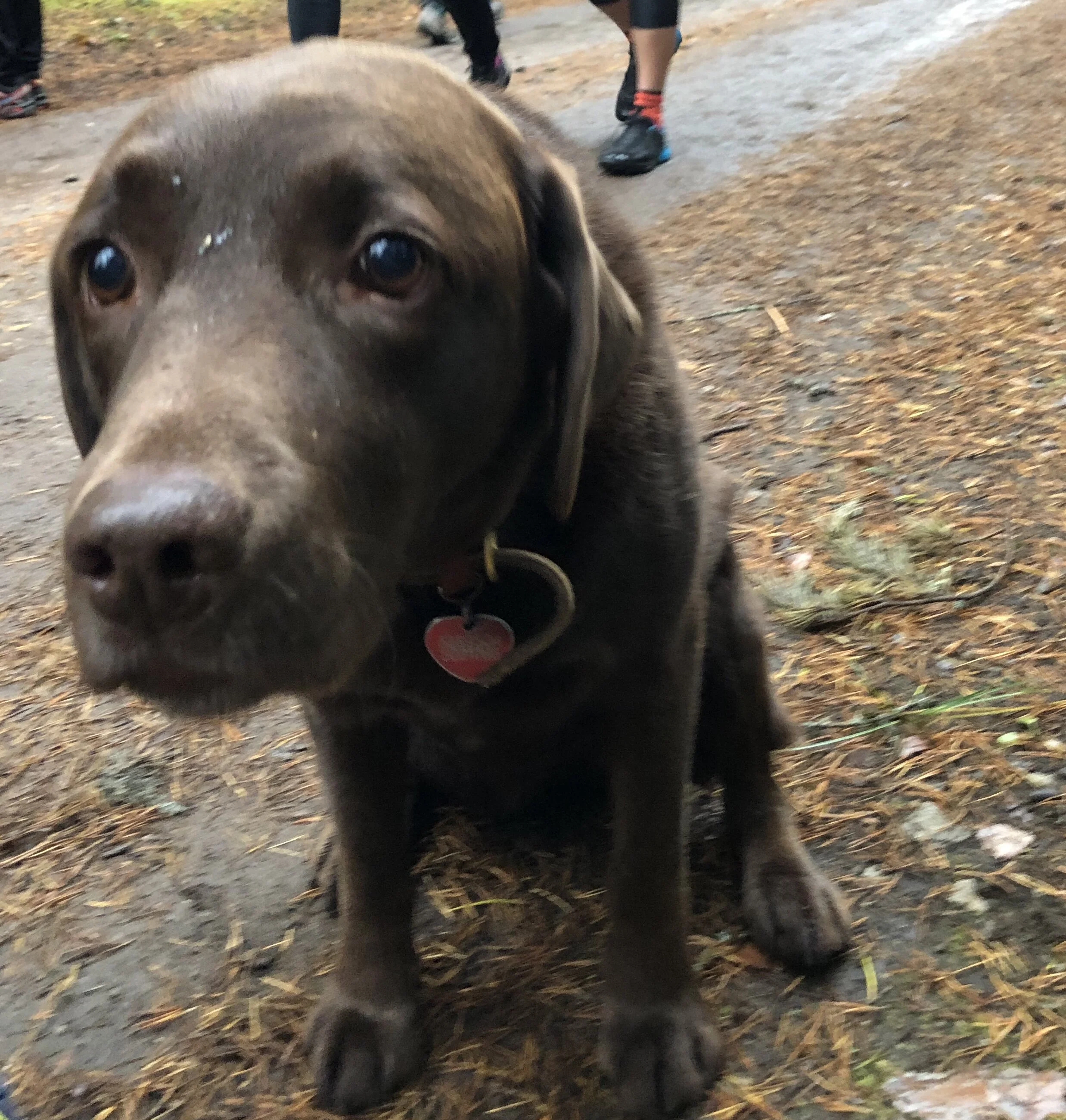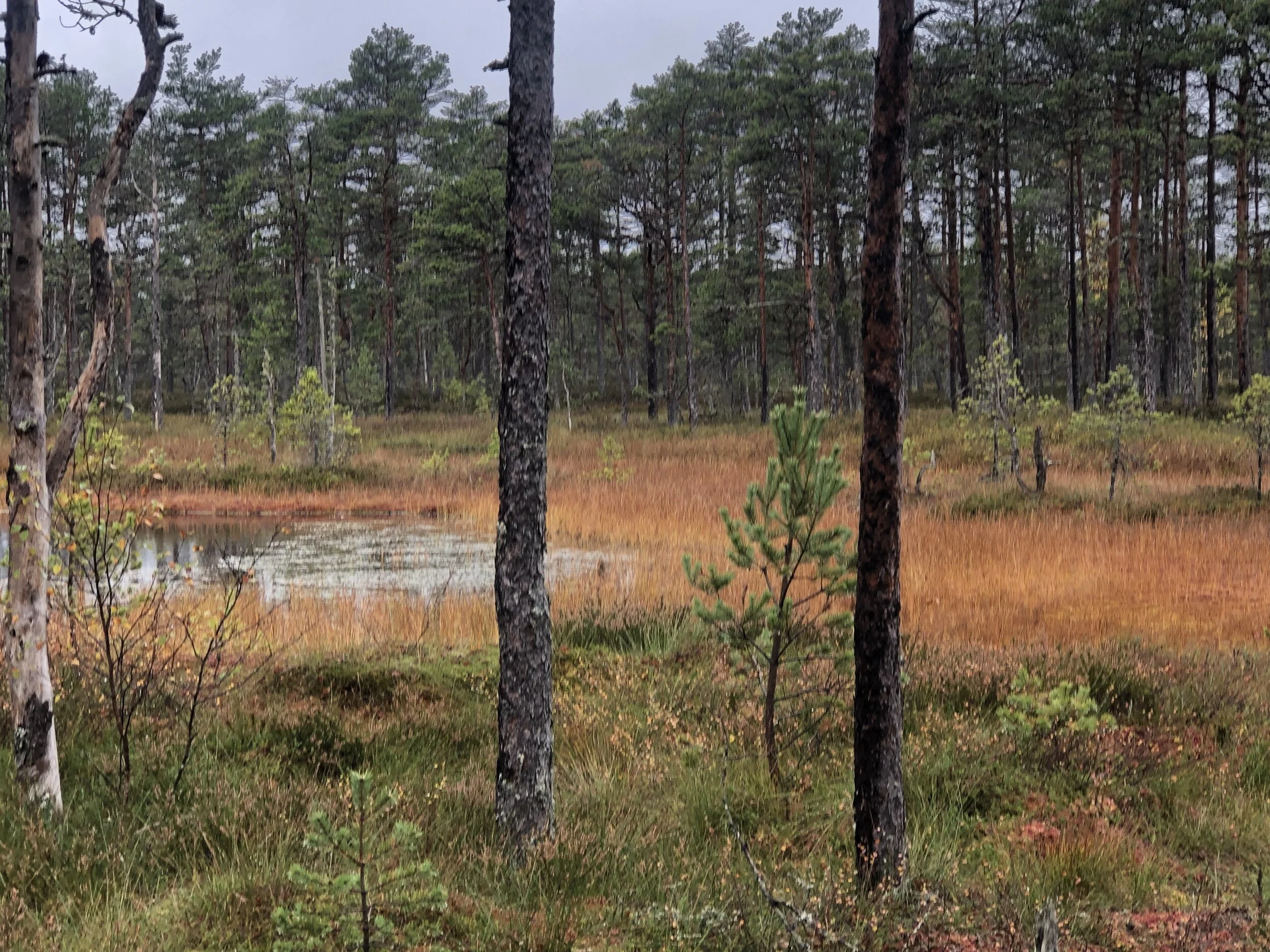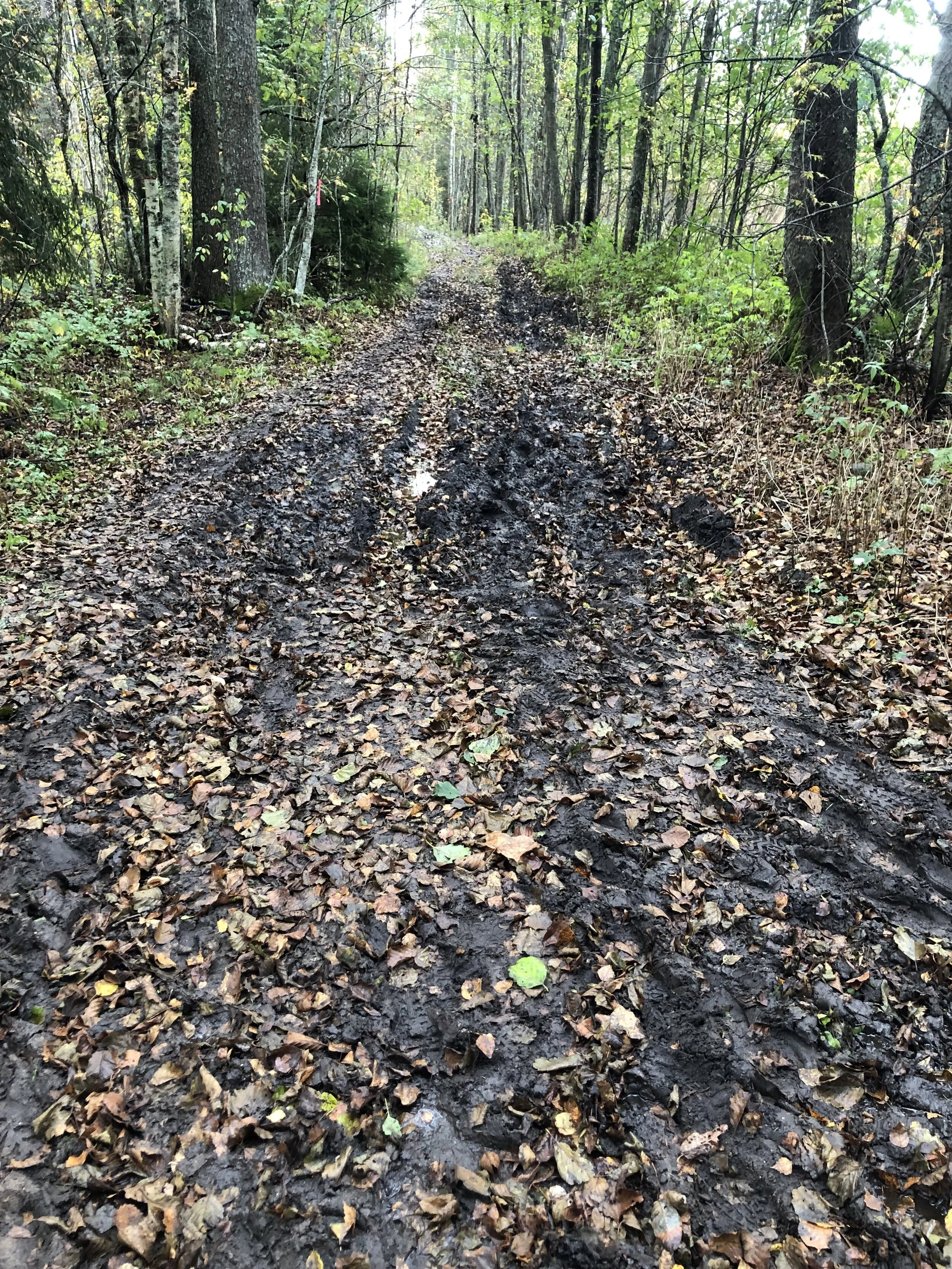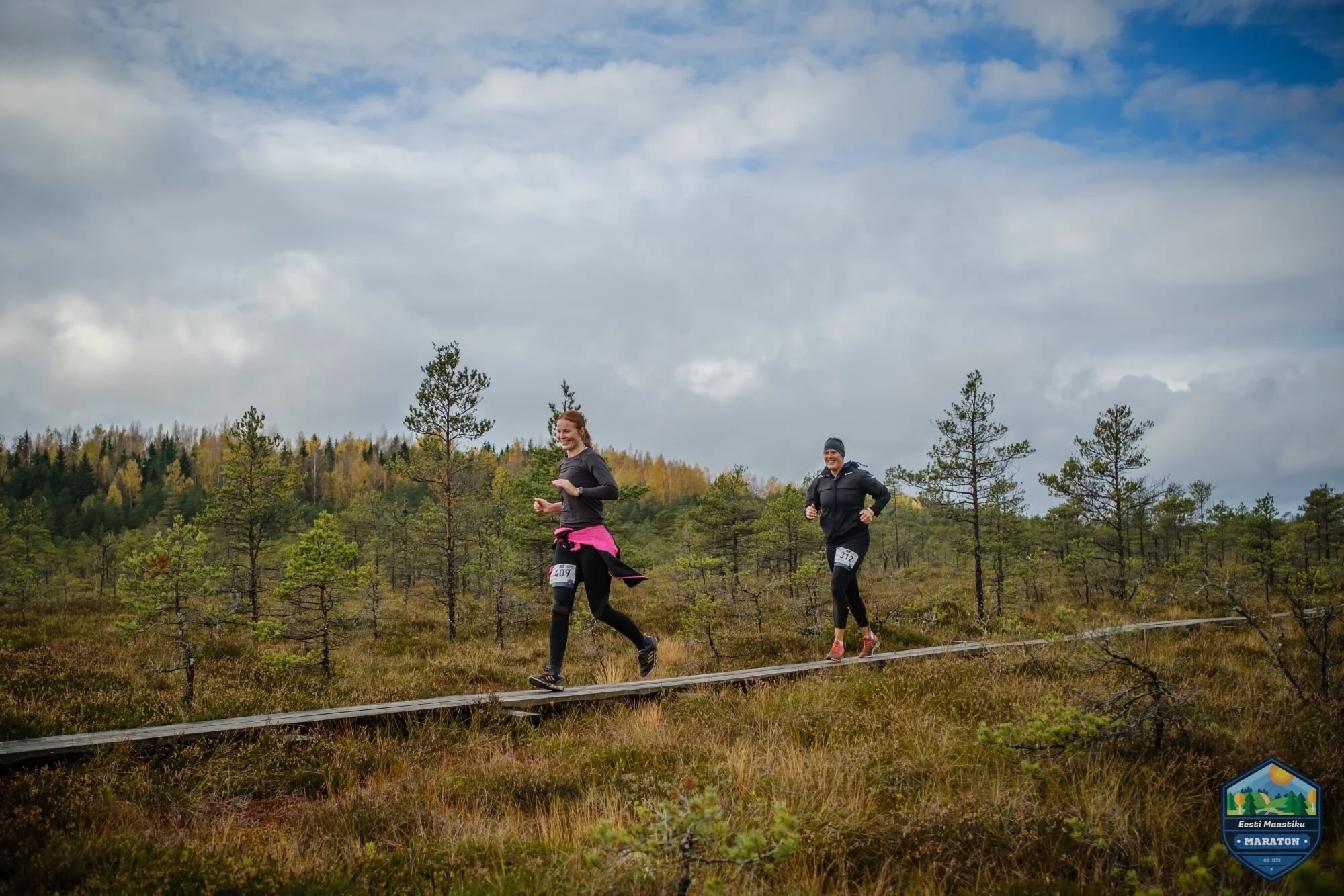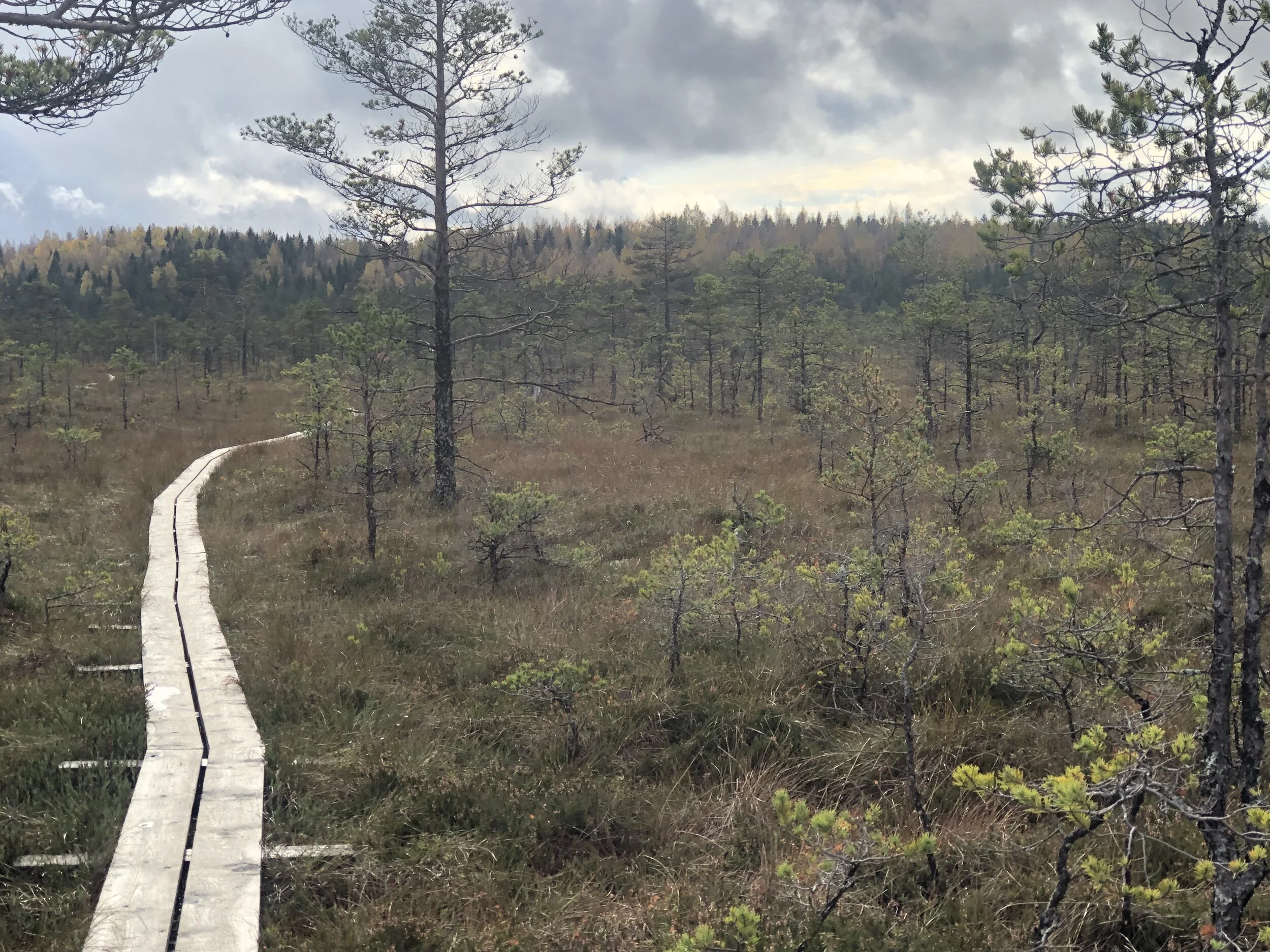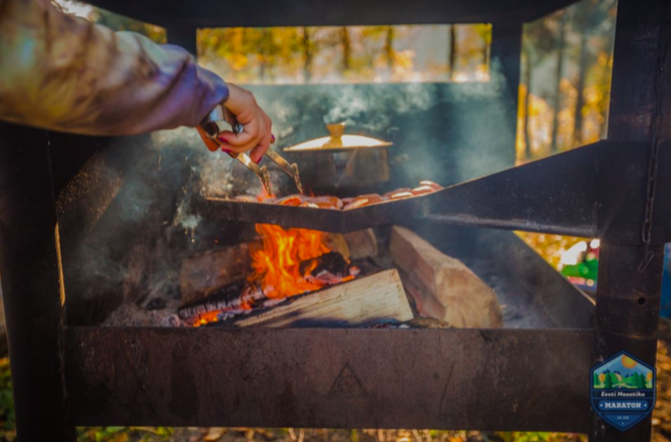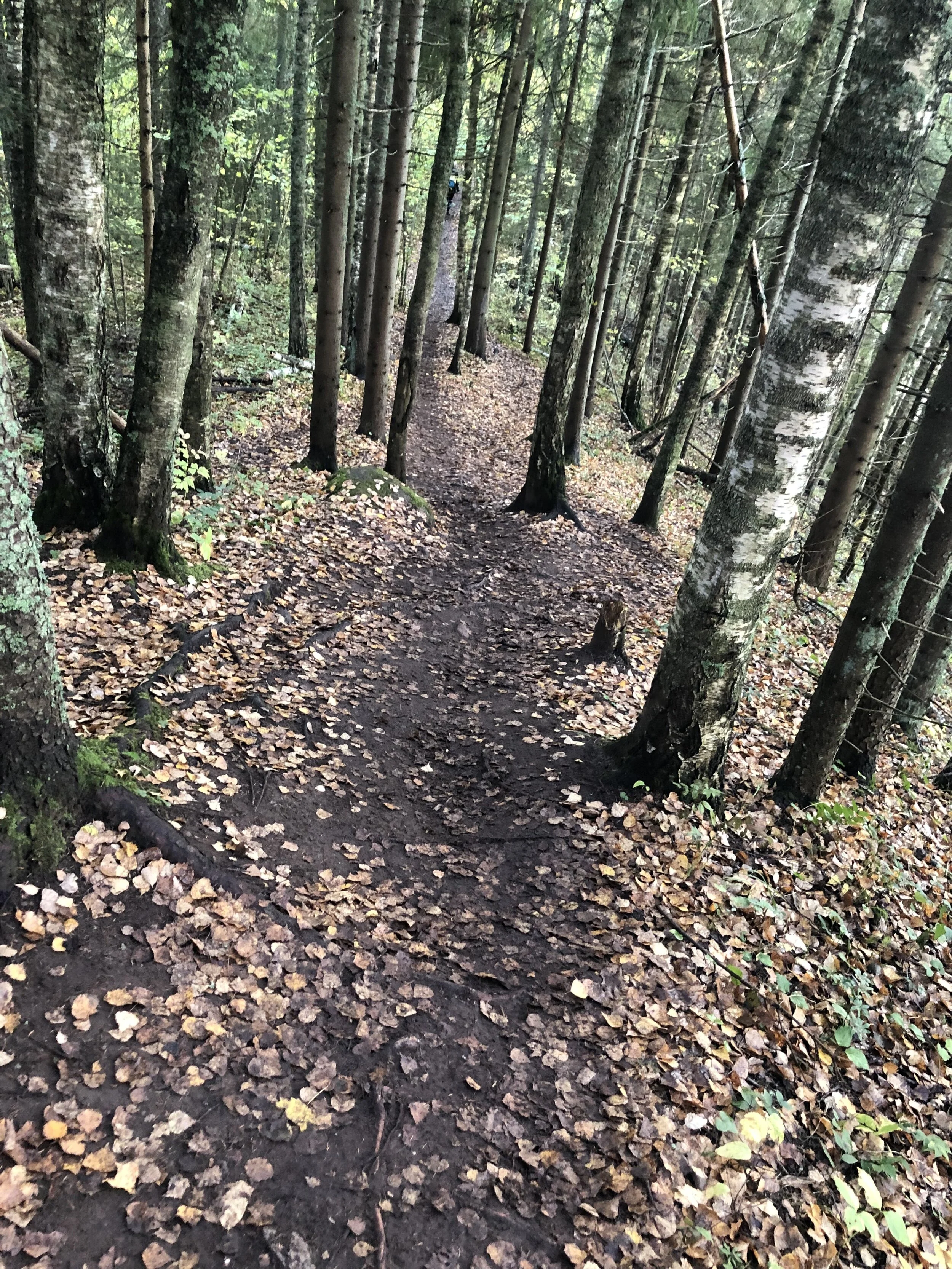KAHEKSA - EESTI

8
ESTONIAN WILDERNESS MARATHON 42+K
OCTOBER 2020
Having finished the New York City Marathon last year, I was absolutely certain that my next race would be in Rome. But as it's sometimes the case – people make plans and God laughs. Just like this time, for in addition to postponing the marathon in Rome due to COVID-19, all other running events, which I had planned for the year, had to be put off. Virtual marathons are not my cup of tea because I know that the feeling you get when you begin and end a marathon, tired but happy, along with so many other runners cannot be replicated in a virtual race. Due to the fact that all the races abroad were being put off further in the future, I decided at last to run a marathon in my beautiful homeland. So, what's Estonia like then?
There are only 1.37 million people living in Estonia, the capital of which is Tallinn. The jewel of Tallinn is the medieval Old Town, which is listed as a UNESCO World Heritage Site.
Tallinn Old Town. Photo: Kaupo Kalda
Estonians are forest people, nearly half of the land of Estonia is covered by forest. Estonia has the highest amount of meteor craters in the world. We are known for our Song and Dance Festival traditions. The international cleanup campaign „Let's Do it! World“ was started by Estonians. Tallinn TV Tower boasts the highest outdoor terrace in the northern Europe at a height of 175 metres. The longest ice road of Europe, a total of 26.5 km, is also located in Estonia. As is the world's only underwater prison near Paldiski in Rummu.
Estonia is small indeed, but there's so much to explore. Read more Visit Estonia website page.
Now, let's get back to running. I'm always very careful in choosing my marathons. For me, running a marathon is not only about conquering 42 km, but what also matters is where the race takes place. This time I decided to run my first Estonian marathon in Lahemaa National Park and so Estonian Wilderness Marathon (Eesti Maastikumaraton) became my eighth marathon. To begin with, I quote the marathon homepage: „Trail marathon that takes you on an expedition through the most beautiful and pristine forests and bogs of Estonia. When we say “expedition”, we mean it. Runners will travel through uninhabited wilderness on a linear course starting out from Lahemaa National Park in the north and running 42k south, finishing in the center of Kõrvemaa Nature Reserve. This is a race not for the faint-hearted. There will be no options to drop out. You have to make it to the finish line on your own. You will be rewarded with the most special achievement and memories Estonian nature can offer.“
The course distance was put down as 42.2 to 43.5 km in the competition rules. The final length depends on terrain conditions as well as the water level. The course is well-marked and doesn't require any orienteering skills. You also get a waterproof map of the trail to take with you. The race starts from Kõnnu and finishes in Aegviidu. Because the start and finish are located in different places, the arrival to the start must be planned ahead really well. One of the options is to take a bus from Tallinn to Kõnnu and then take a train back from Aegviidu. I made a different choice. I took my car to Aegviidu where transport was organised to take us to Kõnnu.
I have to say – the morning of the race day didn't look very promising. It was raining cats and dogs when I took off at 8 o'clock from home. It was 10 degrees outside and the air was nicely crisp. Me and two other yoga instructors made some videos for Yogahouse.ee the day before, and Kei, my good colleague, was speaking about meditation. About how athletes employ different meditation tools before competitions to perform better. There was enough time during the one-hour drive to go through the race from beginning to end in my mind and mentally prepare myself for the difficult run. Thanks, Kei!
Runners are usually divided into starting waves at marathons, which means that the starting order is arranged according to the estimated finishing times. The fastest are the first to start, followed by the slower ones. Depending on a marathon, the waves are indicated either by colour, number or letter. However, this time, wild animals were used to distinguish the waves. Rabbits, the experienced long-distance runners, aiming for a certain time and place in the marathon, were first to start. They were followed by wolves. Foxes, the cunning and tactical runners, were in the third wave. They find it important to run the race in a relaxed pace and enjoy it. Bears were the last to step in the race. They tread the course in a comfortable pace and they're not afraid to walk. When I was registering on this marathon, it seemed to that it's most fitting for me to be cunning like a fox.
The organiser of the event sending foxes on their way.
There was also a pet among the wild animals taking part of the race.
And so it began! A couple of elements from the periodic table (magnesium and iron) properly administered beforehand, I begin the long journey calm and confident. Work is done, now it's time for reward. A nice run/walk surrounded by beautiful forests and hills of Estonia.
The first kilometres already showcase the diversity of the race profile. Narrow hiking trails alternate with wider roads. Some of the first difficult ascents as well as the crossing of bridges and steps are readily presented in the beginning of the race.
This marathon uses course markers that count down the distance, so that you know how many more kilometres there is to go, and without so much as noticing it, I've reached the first marker. There are 40 kilometres left.
Narrow hiking trails meander up and down on the soft terrain. Beautiful colours of autumn and fresh air to top it off.
I reach Viru Bog where the race continues on a narrow boardwalk, at times still very slippery from the morning's rainfall, so I've got to be careful.
But luckily the views are simply breathtaking!
The first drink station is right after Viru Bog, by which time a little over seven kilometres has been passed. Water is not offered from cups, each runner must have their own water bottle which they can fill in the drink station. Candy was also offered. I snatch a few on the go and scurry to the forest. The first difficult stretch of this marathon is now beginning for me as the terrain is becoming very uneven and swampy. Muddy roads alternate with narrow forest trails. So as not to take a fall, one must not only pay attention to the course markers, but also to the roots of the trees.
My feet are wet from mud and I'm starting to feel tired, but I'm still pushing on until I arrive at a tunnel to run through it.
I was hoping to see light at the end of the tunnel, but the course continued posing challenges with its rises and falls. Having to go through a tree felling site caused mixed feelings.
Estonian forests.
The most common types of trees in Estonian forests are fir, pine, birch and aspen.
Although nearly half of the mainland of Estonia is covered by forest, then according to the OECD Environmental Performance Review of 2017, Estonia has the second most intensively farmed forests in the European Union. The relative vanishing pace of Estonian forests is twice as fast compared to Brazilian rainforests. Many wild animals and birds have lost their homes as a result of clear-cutting. Some species are able to dwell only in natural forests, and unfortunately we currently have only about 2 percent left, the area of which is subject to disappearance at a considerable pace at 400 hectares per year, which is due to the fact a large part of natural forests have yet to be taken under protection. In already 2010, the National Audit Office made the calculations based on the activity of RMK (State Forest Management Centre), saying that if this pace of deforestation continues, then mature Estonian fir forests will be gone in 20, birch forests in 30 and pine forests in 50 years.
Are our forests really kept and protected well enough? As an Estonian, it does seem to me like we're living in the midst of greenery and Estonia still continues to be one of the most forest-rich countries in the world. However, if we carry on managing our forests this way, won't we run out of our forests one day?
Source: passages used from the article by Linda-Mari Väli
At last, I reach the 30 kilometre marker. It feels like I've spent half a day galloping in this mud and dirt, yet I still have more than half a distance to go!
Beautiful views alternate with mud fest.
I finally reach the second drink station, so I can fill my water bottle. Local sports drink – a berry juice heated over live fire – is also offered.
After a quick rest I'm back on the track, and we're once again welcomed by new ascents. Estonia is supposed to be a flat country. Based on my experience in this race, I'm more than ready to refute such arguments.
Then comes the highlight of this run for me: passing through Kõnnu Suursoo Bog. It was just dazzlingly beautiful and magical. I stop quite a few times to just enjoy these views, these lovely autumn colours as I take in deep breaths of fresh bog air.
My running shoes were bright clean before the marathon. Sadly, I didn't take any before and after pictures, but my feet looked just like this in Kõnnu Suursoo Bog. Running shoes are evenly muddy. You can still get a glimpse of a little bit of pink and yellow.
What is a mire?
Mire is a natural area or an ecosystem, where as a result of the conditions of excessive humidity and oxygen deprivation, there is a low rate of decomposition of plant residues, causing peat to accumulate. Only peat areas where the thickness of the peat layer is more than 30 cm are considered mires.
There are 9836 mires in the Republic of Estonia and it makes up 22.3% of the area. Estonia ranks second in the world in terms of swampy area in the country, with Finland taking the first place. Based on development phases, mires in Estonia are divided into three.
1) Fen is characterised by diverse vegetation.
2) Mesotrophic mire marks a transition between fen and bog. Mesotrophic mires are characterised by the diverse vegetation of fens and the vegetation of bogs on the higher sods.
3) Oligotrophic mire or bog is the final development phase of mires, characterised by poor vegetation.
The protection of mires is very important from the standpoint of climate warming as they are responsible for binding 25-30% of the carbon found in the atmosphere, resulting in the fluctuation of the content of greenhouse gas CO2.
(Source: Vikipeedia)
Race once again continues in the forest. It feels like, for a moment, that you find yourself in a fairy tale forest, where the forest elves stroke your head and then in the next moment you're back in hell again. Fighting for survival on a muddy trail, perilous tree roots waiting to attack. Dessert for runners: difficult ascents and dangerous descents.
Here comes the hardest moment of the marathon for me. My feet are already tired, I slacken my vigilance just for a second on the muddy trail and I stumble over a tree root. The flight in the air is magnificent and so as not to fall flat on my face into the mud, I land on my hands. It hurts. Now this is the place where I'd like to cry a little. However, it stands in the marathon regulations that one cannot drop out as it's impossible to reach the narrow and muddy forest trails by car. No one is going to come and rescue you, I have to make it on my own. At first glance, it seems like nothing is broken. I pity myself for a bit, get myself up with difficulty and carry on. And then I suddenly sense a faint smell of grilled sausages waft up my nose. The smell is growing increasingly stronger and along with it, my step also becomes a little bit lighter as I'm approaching a small resting point.
Have you ever ran a marathon where you're offered grilled sausage straight from the live fire at a drink station?
I've grown rather hungry during the difficult run and it's just so nice to treat myself to a grilled sausage sandwich. Warm food and hot tea give me strength to keep on pushing.
The fact that such a small strip of land presents as alternating a terrain as this seems absolutely unbelievable. Narrow hiking trails alternate with slightly broader ski tracks which are surrounded by beautiful lakes. And then suddenly the forest ends. There lies a massive clearing before me as if I was somewhere in Lapland tundra. But it's Jussi Heath instead. Another small ascent at first and then the track meanders along the more or less flat terrain. I get this feeling as if I'm running somewhere at the back of the world's neck.
In the middle of the empty heath, one can spot a yellow course marker already from a distance. The last 15 kilometres to go.
But 15 kilometres is how much I usually run when I train at home! Even though my knee and wrists are hurting from the fall, I find a new burst of strength in knowing that the end is not far anymore. The course once again meanders through the forest and when it's 10 kilometres to go, I reach the last but one drink station. Besides salted bread and candies, there's also some fermented cucumber for the runners.
Photo: Urmas Luik
Actually we need very little to be happy. At that moment, the slightly salted, crunchy cucumber made me the happiest person in the world. I grabbed a few more cucumber slices on the go to pass the last quarter of the race. I'm feeling good, there's a smile on my face for I'm completely sure that I'm going to finish this challenging competition.
And then a wall literally rose before me.
The last quarter of the course once again offers a very diverse terrain. These photos are actually a bit deceptive. In real life, it felt like climbing up a wall and the difficult descents also didn't exactly spoil us. But even so, the beautiful lakes please the eye and a light whisper of the forest caresses the ear. And these wooden bridges and narrow boardwalks. Beautiful and painful at the same time.
A few kilometres before the end, the runners reach the legendary „resuscitation station“. A dose of doping in the form of Vana Tallinn (Vana Tallinn is a quality rum, infused with the best of spices and exotic citruses) and the finish of the race is only but a stone's throw away.
Now this was a real wilderness marathon that provided both pleasure to the eye and a chance to challenge oneself. And if you find yourself interested in the tiny Estonia at this point and would like to add an Estonian song in your Spotify running playlist, then Trad Attack!'s Pass-pass hits the mark.


